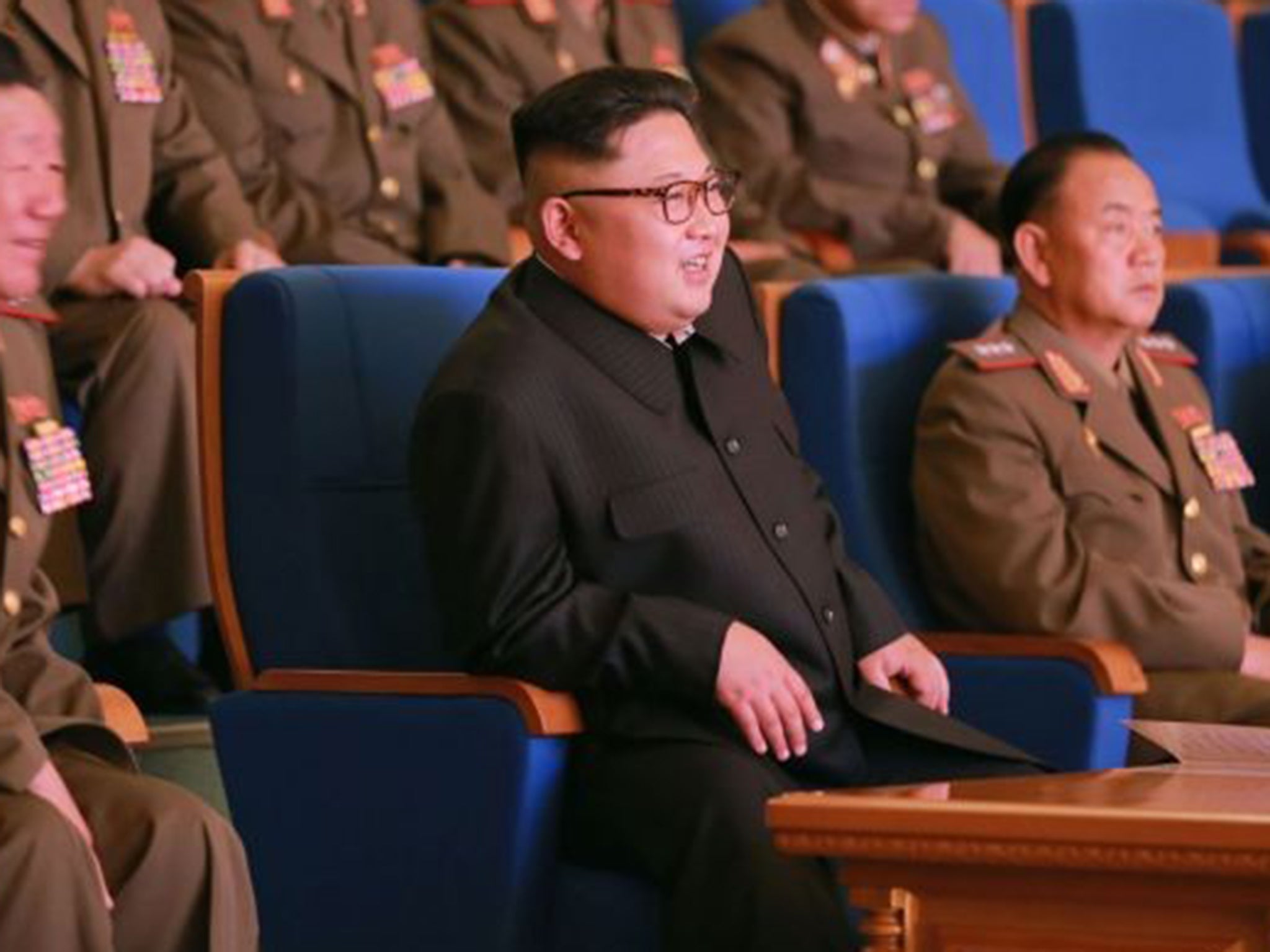North Korea ‘practicing blowing up South Korean ports and airports with nuclear warheads’
Military officials say missiles have the potential to hit targets in the southern-most parts of the peninsular

North Korea says it has been practicing to blow up South Korean ports and airports with nuclear warheads during its most recent ballistic missile launches, the latest sign of Pyongyang's anger over attempts to contain it.
North Korea launched three missiles – two short-range Scuds and one medium-rang Rodong – from a launch site south of the capital Pyongyang early on Tuesday morning. They flew about 350 miles across the peninsula to land in the sea off the east coast.South Korean military officials said they had the potential to hit even the southern most parts of their country.
The launches were part of a drill overseen by Kim Jong-un, the third-generation leader of the country who bears the official title of “Supreme Commander of the Korean People's Army”.
The drill rehearsed “making preemptive strikes at ports and airfields in the operational theatre in south Korea, where the US imperialists nuclear war hardware is to be hurled,” the North's official Korean Central News Agency said.
In response to North Korea's previous provocations this year – January's nuclear test and the steady stream of missiles that have followed it – South Korea has agreed to host a sophisticated anti-missile system, despite the strong objections of China, a key trading partner.
The US and South Korea this month finalised the details for deploying a terminal high-altitude area defense (Thaad), battery to South Korea that would be operated by US forces stationed there. It is designed to intercept incoming missiles.
Han Min-goo, the South's defence minister, told politicians in an emergency session held on Tuesday afternoon that North Korea's missiles constituted a “sort of protest” against the planned Thaad deployment.
The decision has also been controversial in South Korea, particularly in the rural area of Seongju, about 130 miles southeast of Seoul, which has been chosen as the site for the battery. Residents pelted the South Korean Prime Minister, Hwang Kyo-ahn, with eggs when he visited last week to try to alleviate their concerns that they would become a target for North Korea.
Inside the daily life in North Korea
Show all 19The North has been putting out a steady stream of invective over its neighbour’s increasingly assertive response, at the same time as boasting of making technological breakthroughs in its nuclear weapons program.
Tuesday's drill simulated detonating “nuclear warheads mounted on the ballistic rockets at the designated altitude over the target area”, KCNA said.
North Korea has proven it has nuclear devices and has also shown advances in its missile programme, although progress hasn't always been smooth. Most of the six intermediate-range Musudan missile tests carried out in recent months have been failures.
Despite its boasts, there is considerable doubt about whether North Korea has mastered the next, difficult steps: making nuclear warheads small enough to mount on a missile, and then being able to deliver it. While many analysts, and a considerable number of American officials, think that it's just a matter of time until the North can do this, there's been no evidence to suggest they're there yet.
But North Korea has continued to pump out statements that increase tension on the peninsula, where the two sides remain technically at war, more than 60 years after the end of the Korean war.
“Kim Jong-un expressed great satisfaction over the successful drill,” the KCNA statement said, and he praised the soldiers for being “fully ready to carry out any order issued all of a sudden”.
Washington Post
Subscribe to Independent Premium to bookmark this article
Want to bookmark your favourite articles and stories to read or reference later? Start your Independent Premium subscription today.

Join our commenting forum
Join thought-provoking conversations, follow other Independent readers and see their replies